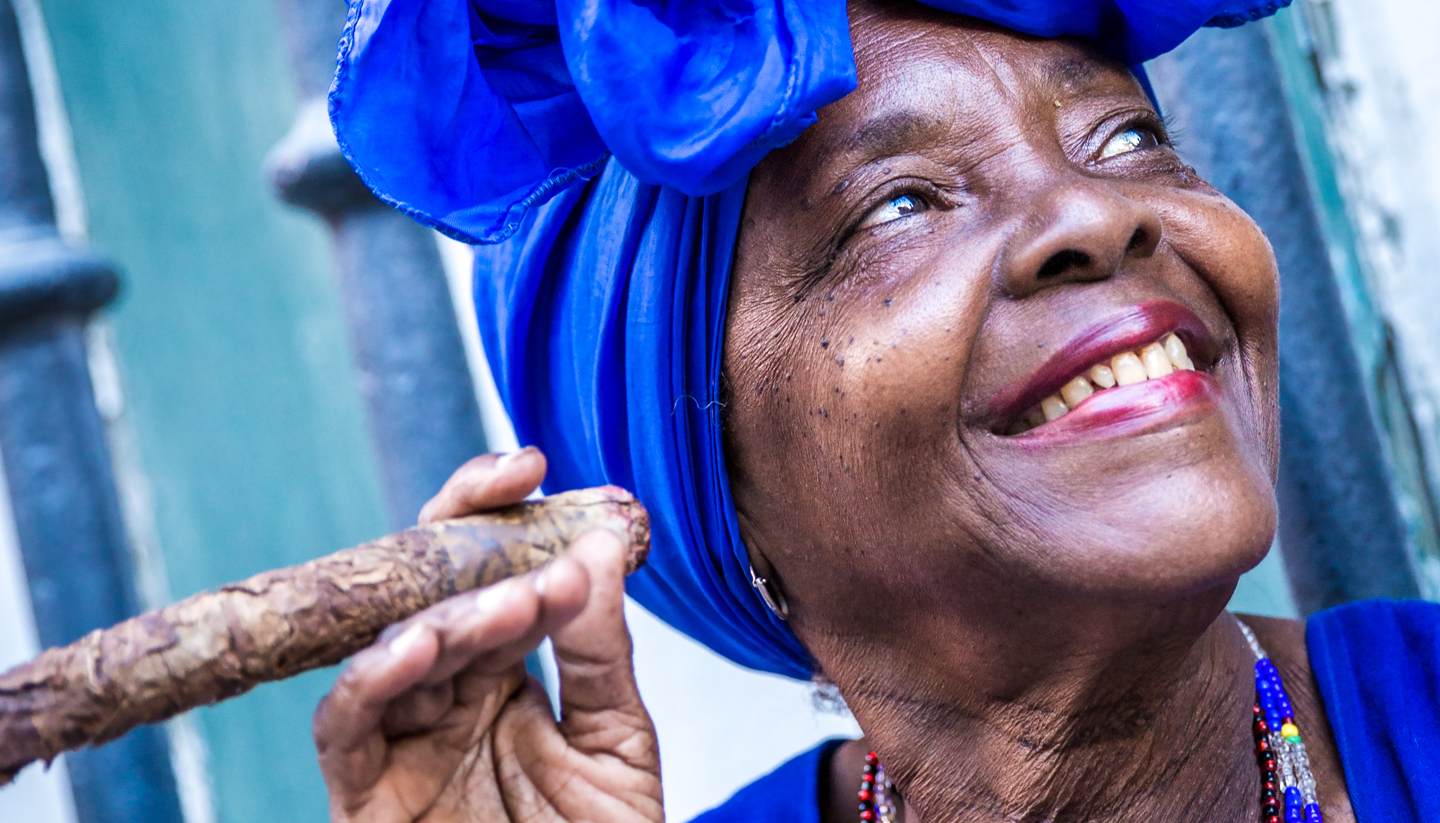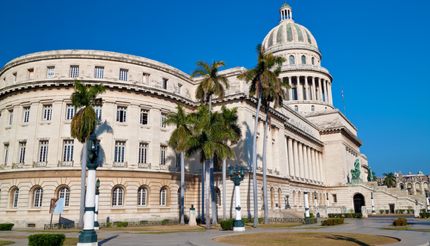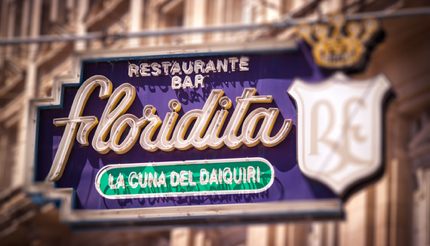Buzzing, frenetic and steeped in history, Havana is one of the most bewildering and captivating cities in the Caribbean.
Prepare for a culture shock and take a step back in time in a city gorged with architectural gems, 1950s cars and rum, rum and more rum. Whether you stay a day or a week, Havana will linger in your memory long after you’ve gone.
EARLY RISE
You could stay in an 18th-century palace in Havana’s Old Town or an art nouveau boutique hotel on the waterfront, but to experience Cuban life like a local, the best option is to opt for a casa particular, a Cuban’s home – typically well located, very cheap and full of character (both place and host). Wake up to the sounds of Habaneros (Havana residents) going about their daily business outside your window and set off early to explore the UNESCO-listed streets of Habana Vieja (Old Havana). Early morning is the best time to take perfectly lit pictures, meet interesting locals and appreciate Habana Vieja’s mix of restored and crumbling buildings, without getting harassed by jineteros (hustlers) trying to sell you fake cigars or Che Guevara memorabilia.
BREAKFAST
Food is not Cuba’s main draw, but there are ways to taste some delicious grub if you know where to go and what to try. For breakfast, pop into a hotel’s restaurant, try sweets from a street vendor or local bakery, or if you’ve stayed in a casa, eat there – it’s by far the best option for breakfast and is normally included in the price. Casa owners serve a mix of bread, marmalade, honey, eggs and fruits (banana, papaya or any fruit that’s in season), with freshly brewed coffee and pressed juice.
MORNING
Now that all shops and museums are open, stare at the imposing El Capitolio (strikingly resembling the Capitol Building in Washington, DC) in Centro Habana, before heading to the Real Fábrica de Tabacos Partagás (Calle Industria 520), just behind the Capitolio, one of Cuba’s oldest and largest cigar factories, for an insight into the making of one of Cuba’s most exported products. There are regular, 45-minute guided tours (10am and 2pm for English tours), but the best time to visit is mid-morning when you’ll get to see a lector read the papers to the 700 employees rolling cigars before your eyes. You can’t take pictures, so enjoy the sight and smell of fresh cigars before buying some in the factory’s excellent shop.
For history buffs and culture vultures, the Museo Nacional de Bellas Artes (Calle Trocadero) and Museo de la Revolución (Calle Refugio 1), north of the Capitolio, are also worth a visit. On your way to Habana Vieja, stop for a coffee at the Edificio Bacardí (Avenida de las Misiones between Empedrado and San Juan de Dios), a triumph of art deco architecture with a stunning lobby and small café.
If you haven’t already, take a step back in time with a stroll through Habana Vieja. Start with Calle Obispo, a vibrant, pedestrianised street where Cubans come to shop. Brimming with street vendors, tourist shops, galleries, bookstores, hotels and restaurants, this is one of the most animated streets in the city. Browse the book stalls on Plaza de Armas (for works by Jose Martí, Fidel Castro and other communist icons), at the north end of Obispo. From here, the waterfront is just minutes away.
LUNCH
For lunch, head to Plaza de la Catedral where you’ll find pretty alfresco cafés with musicians playing Cuban classics while you eat. The picturesque square is flanked by colonial buildings and dominated by one of the oldest cathedrals in the Americas, the 18th-century Catedral de San Cristóbal de la Habana. If you want to get away from the crowds and the hustle and bustle of the city, walk to the waterfront and try gourmet seafood at El Templete (corner of Avenida Carlos Manuel de Céspedes and Narcisco López).
AFTERNOON
Post-lunch, on a stroll between Plaza de Armas and Plaza de la Catedral, stop at Hotel Ambos Mundos, a stylish 1920s building, where Ernest Hemingway stayed during much of the 1930s. In room 511, he began to write For Whom The Bell Tolls. Hemingway’s room has been preserved pretty much as it was when he was a guest and is now open as a museum. Head back downstairs for a commemorative drink or two in the lobby’s bar, where mojitos come with live piano accompaniment.
Thirst quenched and relaxed, escape the afternoon heat by hopping on to a ‘Coco Taxi’ (yellow three-wheel mopeds) to La Rampa in Vedado (west of Centro Habana). You’ll ride along the Malecón, Havana’s scenic seafront promenade lined with colourful neo-classical buildings.
If you don’t mind queuing (sometimes for up to an hour), stop for ice cream at Coppelia (corner of Calle 23 and L), a massive ice cream parlour housed in a 1960s space-age-style building in the middle of a park. Serving over a thousand customers a day, it’s hugely popular with locals and the ice cream tastes delicious. For those who can’t wait, there’s also a fast-track parlour to the left of the main entrance, where you can pay in convertible pesos. It lacks the character of Coppelia’s main building and only offers a few flavours like chocolate and vanilla, but you won’t have to wait in line for more than five minutes.
Head back to the seafront to see the world-famous Hotel Nacional (corner of Calle 0 and 21). Having been declared a national monument, the Hotel Nacional is the granddaddy of all Cuban hotels and a destination in its own right, with its princely tiled lobby, original iron-grille elevators and elegant colonnaded veranda overlooking the sea. Before it gets dark, stroll along the Malecón and watch the fishermen as the sun sets and the sidewalk fills up with couples, musicians and vendors.
EVENING
For authentic and often excellent food, eat dinner in a paladar – a restaurant run by ordinary Cubans in their own homes – such as the atmospheric La Guarida (Concordia 418 between Gervasio and Escobar) in Centro Habana, Paladar de Adela (Calle F 503 between 23 and 21) in Vedado, or La Cocina de Lilliam (Calle 48 11311 between 13 and 15) in Miramar. Book ahead to guarantee a table.
An evening in Cuba is not complete without some live music and yet more rum. Head to Casa de la Música (Avenida de Italia 155 between Neptuno and Concordia) in Centro Habana for world-class salsa; El Floridita (Calle Obispo 557) in Habana Vieja for Hemingway’s favourite tipple, frozen daiquiris; or Opus Bar (corner of Calzada and D) in Vedado for cocktails and heart-wrenching boleros in a retro, 1970s lounge bar above the Teatro Amadeo Roldán.
To find out more about Havana, visit our Havana travel guide.
Liked this article? You may also like:
Finding Hemingway’s Havana








